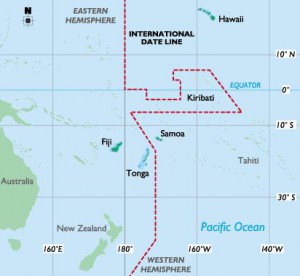October Launch Date for Europes Version of GPS
| By Stuart
The launch date for the first Galileo satellites, the European version of the Global Positioning System (GPS), has been scheduled for mid October, say the European Space Agency (ESA).
Two Galileo in-orbit validation (IOV) satellites will be launched using a modified Russian Soyus rocket this October, marking a milestone in the Galileo project’s development.
Originally scheduled for August, the delayed October launch will lift off from ESA’s spaceport in French Guiana, South America, using the latest version of the Soyuz rocket—the world’s most reliable and most used rocket in history(Soyus was the rocket that propelled both Sputnik—the first orbital satellite—and Yuri Gargarin—the first man in orbit—into space).
Galileo, a joint European initiative, is set to rival the American controlled GPS, which is controlled by the United States military. With so many technologies reliant on satellite navigation and timing signals, Europe needs its own system in case the USA decides to switch off their civilian signal during times of emergency (war and terrorist attacks such as 9/11) leaving many technologies without the crucial GPS signal.
Currently GPS not only controls the words transportation syste3ms with shipping, airliners and motorists increasingly becoming reliant on it, but GPS also provides timing signals to technologies such as NTP servers, ensuring accurate and precise time.
And the Galileo system will be good for current GPS users too, as it will be interoperable and, therefore, will increase accuracy of the 30-year-old GPS network, which is in need of upgrade.
Currently, a prototype Galileo satellite, GIOVE-B, is in orbit and has been functioning perfectly for the last three years. Onboard the satellite, as with all global navigation satellite system (GNSS) including GPS, is an atomic clock, which is used to transmit a timing signal that Earth-based navigation systems can use to triangulate accurate positioning (by using multiple satellite signals).
The atomic clock aboard GIOVE-B is currently the most accurate atomic clock in orbit, and with similar technology intended for all Galileo satellite, this is the reason why the European system will be more accurate than GPS.
These atomic clock systems are also used by NTP servers, to receive an accurate and precise form of time, which many technologies are dependent on to ensure synchronicity and accuracy, including most of the world’s computer networks.





